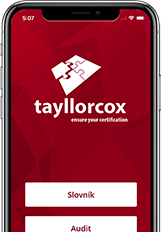 Fraud Detection Using Descriptive, Predictive, and Social Network Analytics
Fraud Detection Using Descriptive, Predictive, and Social Network Analytics
A typical organization loses an estimated 5 of its yearly revenue to fraud. This course shows how learning fraud patterns from historical data can be used to fight fraud. The course discusses the use of supervised learning (using a labeled data set), unsupervised learning (using an unlabeled data set), and social network learning (using a networked data set). The techniques can be applied across a wide variety of fraud applications, such as insurance fraud, credit card fraud, anti-money laundering, healthcare fraud, telecommunications fraud, click fraud, tax evasion, and counterfeiting. The course provides a mix of both theoretical and technical insights, as well as practical implementation details. During the course, the instructor reports extensively on his recent research insights about the topic. Various real-life case studies and examples are presented for further clarification.

Virtual Training nebo e-Learning?
Máme dostatečnou flexibilitu, takže vybírat můžete jak prezenční termíny, tak online kurzy.
Zkuste živý kurz virtuálněTarget group
Fraud analysts, data miners, and data scientists; consultants working in fraud detection; validators auditing fraud models; and researchers in financial services companies, banks, insurance companies, government institutions, health-care institutions, and consulting firms

Course structure
Introduction
Fraud Detection
- The importance of fraud detection.
- Defining fraud.
- Anomalous behavior.
- Fraud cycle.
- Types of fraud.
- Examples of insurance fraud and credit card fraud.
- Key characteristics of successful fraud analytics models.
- Fraud detection challenges.
- Approaches to fraud detection.
Data Preprocessing
- Motivation.
- Types of variables.
- Sampling.
- Visual data exploration.
- Missing values.
- Outlier detection and treatment.
- Standardizing data.
- Transforming data.
- Coarse classification and grouping of attributes.
- Recoding categorical variables.
- Segmentation.
- Variable selection.
Supervised Methods for Fraud Detection
- Target definition.
- Linear regression.
- Logistic regression.
- Decision trees.
- Ensemble methods: bagging, boosting, random forests.
- Neural networks.
- Dealing with skewed class distributions.
- Evaluating fraud detection models.
Unsupervised Methods for Fraud Detection
- Unsupervised learning.
- Clustering approaches: hierarchical clustering, k-means clustering, self-organizing maps.
- Peer group analysis.
- Break point analysis.
Social Networks for Fraud Detection
- Social networks and applications.
- Is fraud a social phenomenon?
- Social network components.
- Visualizing social networks.
- Social network metrics.
- Community mining.
- Social-network-based inference (network classifiers and collective inference).
- From unipartite toward bipartite graphs.
- Featurizing a bigraph.
- Fraud propagation.
- Case study.
Fraud Analytics: Putting It All to Work
- Quantitative monitoring: backtesting, benchmarking.
- Qualitative monitoring: data quality, model design, documentation, corporate governance.
Prerequisites
Before attending this course, you should have a basic knowledge of statistics, including descriptive statistics, confidence intervals, and hypothesis testing.
Jak kurz hodnotí absolventi?
V čem jsou naše reference výjimečné? Nejsou to jednorázové akce. K nám se lidé vrací rádi a nezavírají před námi dveře.
Podívejte se na úplný seznam referenčních klientů, kteří na nás nedají dopustit.
Chcete to připravit na míru? Kontaktujte nás!
Zavolejte nám a my vám poradíme.
Jsme vám k dispozici na telefonním čísle +420 222 553 101 vždy od pondělí do pátku: 9:00 - 17:00.
Nemůžete volat? Zkuste nám napsat
Chcete získat dárek k narozeninám?


